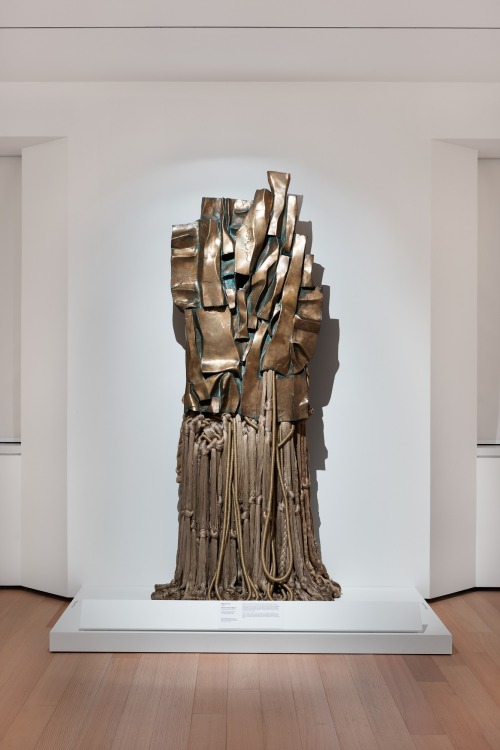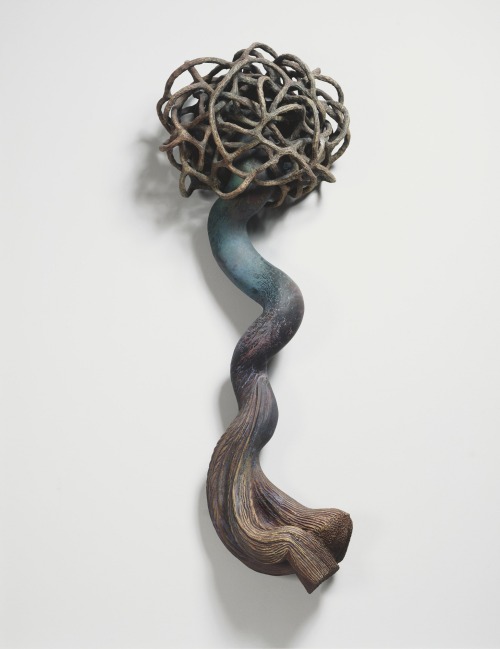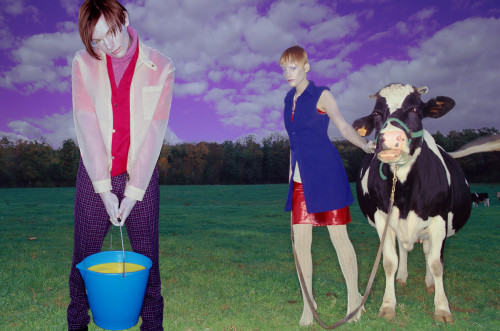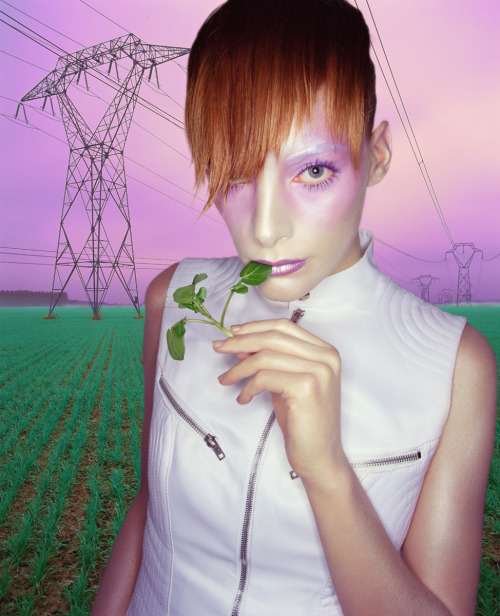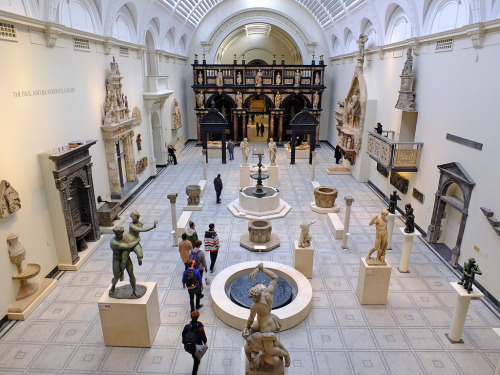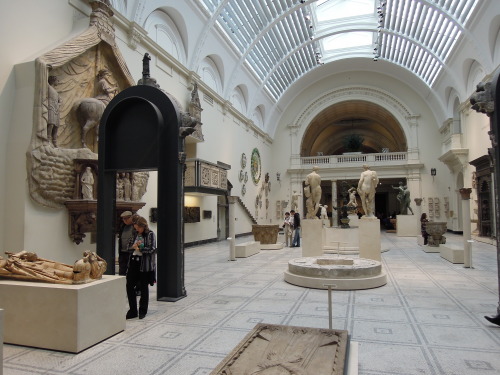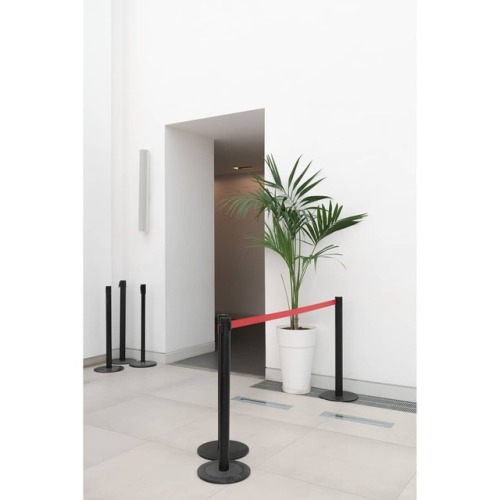#museum
Henry Ossawa Tanner painted “The Annunciation” soon after returning to Paris from a trip to Egypt and Palestine in 1897. The son of a minister in the African Methodist Episcopal Church, Tanner specialized in religious subjects and wanted to experience the people, culture, and architecture of the Holy Land. In this painting Tanner has given a familiar narrative unconventional treatment by weaving together ancient and modern, and spiritual and material threads into his compelling image. Mary becomes a relatable young woman, stunned by the apparition that appears before her. A success at the Paris Salon in 1898, the painting was shown the next year in Philadelphia, where it was purchased for the museum. Among the first contemporary American paintings acquired for the collection, it was also the first of Tanner’s works to enter a museum in the United States. See this highlight of our collection on view in our American galleries.
“The Annunciation,” 1898, by Henry Ossawa Tanner
Post link
Happy birthday to Samella Lewis, who was born on this day in 1924. Lewis is an internationally celebrated artist, curator, editor, and trailblazing art historian who wrote the first survey of African American art history. Her devotion to education is reflected in this stoic image of a young boy clasping a book.
“Boy on Bench,” 2007, by Samella Lewis
Post link
Barbara Chase-Riboud created this monumental sculpture by combining angled bronze forms with bundles of wrapped and knotted fibers. The artist was living in Paris at the time, having moved there in 1960 from her birthplace of Philadelphia. Even though she was abroad, the events of the civil rights movement in the US greatly affected Chase-Riboud and inspired her to dedicate a series of sculptures to the Black Muslim minister and activist Malcolm X. “Malcolm X #3” is a tribute to and celebration of the leader, rather than an icon of mourning. The series was not meant to represent the man in a literal sense or to lament his assassination. The artist instead created the sculptures on an aesthetic basis and dedicated them to Malcolm X as an historical person.
See this sculpture on view in our new exhibition “Elegy: Lament in the 20th Century.”
“Malcolm X #3,” 1969, by Barbara Chase-Riboud © Barbara Chase Riboud
Post link
Pierre-Auguste Renoir, who was born on this day in 1841, was a leading figure in the Impressionist movement. With its daubs of paint and bright colors, “The Grands Boulevards” is a classic example of the style. In this painting, the hustle and bustle of life in Paris is transmitted through Renoir’s visible paint strokes, allowing the viewer to perceive the scene as though it is passing by. See this painting in our European art galleries.
“The Grands Boulevards” 1875, by Pierre-Auguste Renoir
Post link
Using found materials such as mop strings and broken glass, Thornton Dial, Sr., created this monumental, abstracted representation of Dr. Martin Luther King, Jr., exploring the intersection of the secular history of King’s assassination and the sacred history of Christianity. The central tiger—Dial’s primary emblem for representing Black men in his early work, because of the cat’s survival skills—symbolizes King on April 3, 1968. In the lower left-hand corner, we see with a table set with metal pots and pans, representing the Last Supper—the final meal Jesus shared with his twelve apostles the night before the Crucifixion—and signifying the impending murder of the civil rights leader.
See this work on view in our new exhibition “Elegy: Lament in the 20th Century."
”The Last Day of Martin Luther King,“ 1992, by Thornton Dial, Sr. © Estate of Thornton Dial / Artists Rights Society (ARS), New York
Post link
Winslow Homer, who was born on this day in 1836, was one of the most popular artists of the 1880s. One of his great successes, “The Life Line” engages age-old themes of peril at sea and the power of nature, while celebrating modern heroism. See this painting on view in our American art galleries.
“The Life Line,” 1884, by Winslow Homer
Post link
Elizabeth Brown married bootmaker Hiram Montier in 1841. The two were members of the largest Free Black community in the North, which thrived in Philadelphia even before the complete eradication of slavery in Pennsylvania. The artist depicts the Montiers by using the traditional European vocabulary of aristocratic portraiture, with elegant fashions and grand architectural settings. Fine jewelry and books testify to their prosperity, literacy, and faith. This rare pair documents a story of racial integration dating back to the early years of Philadelphia. Hiram Montier’s direct ancestors were Richard and Cremona Morrey, an interracial couple who lived together openly in Cheltenham, just north of Philadelphia, during the early 1700s. Richard’s father, Humphrey Morrey, was appointed Philadelphia’s first mayor in 1691.
See these portraits on view in our New Early American Galleries.
“Portraits of Hiram Charles and Elizabeth Brown Montier,” 1841, by Franklin R. Street (On loan from the Collection of Mr. and Mrs. William Pickens III)
Post link
Syd Carpenter began her academic career in Philadelphia as a painting major at Temple University’s Tyler School of Art. Under the tutelage of Rudolf Staffel, the renowned artist and professor of ceramics, she took several required classes that caused her to find her voice in clay. “A Snake Without a Head Is Just a Rope” is one of a series of four helix-based forms she created in 1994 and was influenced by a trip she took in the late 1980s to Brazil. This trip was the first time she had experienced diasporic African spirituality and its role in culture directly.
“A Snake without a Head Is Just a Rope,” 1994, by Syd Carpenter © Syd Carpenter
Post link
Horace Pippin was born on this day in 1888 in West Chester, Pennsylvania. His work is largely autobiographical, reflecting the Black experience. In our latest edition of PMA Stories, Dr. Synatra Smith reflects on Pippin’s iconic “Mr. Predjudice,” and looks for signs of change in the eight decades since the artist made this powerful painting about American racism.
“Mr. Predjudice,” 1943, by Horace Pippin
Post link
NATURAL VIBRATIONS
( Marithe Francois Girbaud 2000 FW )
ph::Geoffroy de Boismenu
a soft clean cutie - the parents, as a kid i’ve always longed for this Vegetable Disneyland morally perfect purity ☹
Post link
MARS ( The Face 1994 March ) photog::Andrea Giacobbe
can u believe this was made in fkn 1994? like tf…..iconic genius
all the current photographers havent copied this yet but wait in like 2 years giacobbe will be like norbert schoerner all over again.
Anyways im 1000% gonna remake this with my friends i live in a cow town so its perfect brb
Post link
HUMANATURE
( Marithe Francois Girbaud 2001 SS )
ph::Nadav Kander
aw i remember my science purity aesthetic phase <3 this is it <3 like the California Science Center <3
also MFG is maddd underrated on their ads. Some of their other ones are drop dead gorgeous. Unique odd creative direction that’s like my perfect sweet spot between an eye for fashion photography beauty aesthetic and traditional advertising conceptual interestingness.
Post link
The Paul and Jill Ruddock Gallery
Large-scale works, once part of impressive Renaissance buildings, are displayed in the context of the cityscape. At its heart is the courtyard and the garden, with dramatic sculptures, trees and water. The church interior display, evoked by major altarpieces and stained glass, includes the Renaissance chapel from Santa Chiara, Florence. The choir screen from the Cathedral of St John at Hertogenbosch, one of the largest objects on show, dominates the gallery.
Room 50 is on Level 1 of the V&A South Kensington.
Post link
Reclining Pan, c.1535
Attributed to Francesco da Sangallo, Italian, 1494–1576
St. Louis Art Museum
Pan lies on a rocky bed surrounded by vines, grape clusters, and a slithery salamander. Carved from marble in this sculpture, Pan the satyr, a half-human, half-goat creature of mythology is very well known for his bad behavior.
(Perfect placement, don’t you think?)
Post link
Crossed.
Sony Alpha 6300 | EF 24-70mm @ 35mm
ISO 800 | 1/200 sec | f/10
#reggiocalabria #igersreggiocalabria #igers #calabria #calabriadaamare #yallerscalabria #ratioimago #interiordesign #myfeatureshoot #sonyalpha #sonyimages #sonyalphasclub #sonyworldclub #sonyphotogallery #SPicollective #streetphotography #streetphotographer #streetphotographersmagazine #somewheremagazine #expomag #archivecollectivemag #eyemagazine #intercollective #museum #lotsmagazine #ifyouleave #eyesopentalent #eogenerations #eyeshotmag #intercollective (presso Museo Archeologico di Reggio Calabria)
https://www.instagram.com/p/BxmLa0tH4J1/?igshid=e7luq0heffku
Post link
The hall.
Sony Alpha 6300 | EF 24-70mm @ 24mm
ISO 320 | 1/250 sec | f/4. 5
#reggiocalabria #igersreggiocalabria #igers #calabria #calabriadaamare #yallerscalabria #streetfeat #interiordesign #myfeatureshoot #sonyalpha #sonyimages #sonyalphasclub #sonyworldclub #sonyphotogallery #SPicollective #streetphotography #streetphotographer #streetphotographersmagazine #somewheremagazine #expomag #archivecollectivemag #eyemagazine #intercollective #museum #lotsmagazine #ifyouleave #eyesopentalent #eogenerations #eyeshotmag #intercollective (presso Museo Archeologico di Reggio Calabria)
https://www.instagram.com/p/BxjgGLwndWQ/?igshid=6h5zx8n2nif7
Post link
Under-kimono (Nagajuban)| Shōwa Period mid-20th century⠀
——⠀
This man’s under-kimono (nagajuban) is made of dark olive-green crepe silk and decorated with yūzen paste-resist dyeing. The upper part of the back panels is embellished with two skeletons playing go (a traditional Asian board game). In the background of the scene is a delicately painted spider web. The skeletons are rendered in white, black and gray colors, while the background is light gray. Both the figures and their background are painted in softly graded tones. On the lower section of the right back panel a skull is depicted among grasses with a wooden plaque, which bears the inscription “Namu Amida Butsu” (南無阿弥陀仏 “Amitabha Buddha”). In Pure Land Buddhism, the recitation of “Namu Amida Butsu” signifies the speaker’s complete reliance on the compassion of Amitabha Buddha; the chanting of this mantra-like phrase (nenbutsu 念佛 “mindfulness of the Buddha”) is believed to allow rebirth in Amitabha’s Western Pure Land.⠀
⠀
A nagajuban is worn beneath the kimono as undergarment, and not usually seen in public—only in informal settings, with family or friends. A nagajuban is usually shorter than the outer kimono, complete with the long kimono sleeves, which are neatly fitted inside the outer kimono’s sleeves. As silk kimono often cannot be washed, the nagajuban helps keep the outer kimono clean by keeping it off the wearer’s skin. Under-kimono are most often silk.⠀
(@metmuseum Accession Number:2014.723)⠀
——
#13daysofhalloween #kimono #japan #nagajuban #fashion #history #vintage #skeleton #spiderweb # #style #design #mode #moda #silk #museum #art #japaneseart #showaperiod
https://www.instagram.com/p/B3-JHOygUg2/?igshid=114xa17z8mf6b
Post link
Elsa Schiaparelli with Salvador Dalí | ‘The Skeleton Dress’ | c. 1938⠀
——⠀
To many contemporaries the sinister black skeleton evening dress with its padded representations of human bones was an outrage - an offence against good taste. Although otherwise in elegant harmony with the prevailing lines of late 1930s evening wear, the skeleton dress is so constricted that it became a second skin and the imitation anatomy sat defiantly proud of the fine matt silk surface. Schiaparelli exaggerated the usually delicate trapunto quilting technique to make enormous ‘bones’ - the design was stitched in outline through two layers of fabric, then cotton wadding inserted through the back to bring the design into relief on the front. The shoulder seams and right side are closed by bold plastic zips. (Via @vamuseum Museum No. T.394&A-1974)⠀
——⠀
#13daysofhalloween #elsaschiaparelli #schiaparelli #salvadordali #dali #dalí #skeleton #halloween #dress #fashion #1930sfashion #30sfashion #couture #style #design #mode #moda # #museum
https://www.instagram.com/p/B32YOjyAPw_/?igshid=snowv40dymus
Post link
Vivienne Westwood | “On Liberty” | c. 1994⠀
——⠀
More than any other contemporary designer, Vivienne Westwood has been scrupulous in her study of historical forms of dress. Her brilliance, however, has not been in the literal rendering of period artifacts but in her application of contemporary techniques to resolve their form-making and an almost abandoned revivification of their sexual content. Despite its cartoon-like rendering of the bustle, this suit precipitated a surprisingly erotic response when seen in motion on the runway. (@metcostumeinstitute accession no. 1995.213a–h)⠀
——⠀
#viviennewestwood #couture #fashion #suit #dress #plaid #tartan #style #mode #moda #design #punkfashion #red #history #costume #museum #metmuseum
https://www.instagram.com/p/B3hqQrAAHLx/?igshid=1qca5bva9y115
Post link
Afternoon Dress | c. 1883⠀
——⠀
This dress was conceived as the second bustle period was beginning to emerge. The very brief époque between 1880-1884 created some awkward silhouettes as the curaiss bodice was still very much worn while the bustle was burgeoning on the back. Sometimes creating what can only be described as low, lusciously fabricated lumps that didn’t flatter. This sumptuous, aubergine example is definitely an instance where the proportions of the conflicting designs came to fruition in harmony. ⠀
⠀
(@themintmuseum 2010.37a-c)⠀
——⠀
#fashion #dress #victorianfashion #victorian #bustle #glamour #beauty #ootd #curaissbody #style #design #costume #purple #aubergine# #color #art #mode #moda #velvet #silk #mintmuseum #museum
https://www.instagram.com/p/B3R3-xTg8Oh/?igshid=1j5hq2h61q49n
Post link



